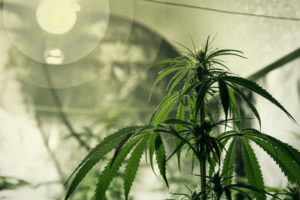 As you progress in your journey toward becoming a master grower, you will soon start identifying the factors in achieving those glorious yields we all love to see in photos and videos.
As you progress in your journey toward becoming a master grower, you will soon start identifying the factors in achieving those glorious yields we all love to see in photos and videos.
Inarguably, lighting is one of the biggest and most immediately recognizable of such limiting factors and, within reason, the more light you give your plants, the more they will yield.
Light is, in itself, just another type of “food” for plants. Keeping this in mind will allow you to better decide what is right for you. Just like an athlete has a specific dietary regime for his sport, so must you consider what is the ideal type of light for your growing conditions.
Cannabis growth rate depends on light. While outdoor growers utilize natural sunlight, indoor growers must optimize the harvest with artificial lighting. Let’s take a look at two (2) pillars of cannabis lighting: quantity and quality.
Quantity
The quantity of light is synonymous with light intensity. The measure of light intensity is Photosynthetic Photon Flux Density (or PPFD), or the number of photons at wavelengths of 400 – 700 nanometers (or nm) striking a square meter per second. This wavelength range is known as Photosynthetically Active Radiation (or PAR) because it can be used to drive photosynthesis and a PPFD of 2,000 is comparable to the summer sun’s noonday light.
Cannabis can handle intense lighting, but it is suggested that cannabis yields increase linearly up to 1,500 PPFD, or about double the intensity more commonly used. It is estimated that an even higher beneficial PPFD of 2,000 can increase the yields of your cannabis plants. Since more light requires more electricity, yields more efficiency (grams per watt) may impose a barrier that limits the amount of light.
Quality

Light quality refers to different wavelengths of light:
UV Radiation (100 – 400 nm)
Ultraviolent light (or radiation) can be harmful to humans and plants (ex. sunburns) and UV-B (280 – 315 nm) light has the potential to damage plant tissue, but in limited supplemental doses, may lead to increased Tetrahydrocannabinol (or THC) content in cannabis.
PAR (400 – 700 nm)
PAR drives plant growth and development. It consists of blue light (400 – 500 nm), green light (500 – 600 nm), and red light (600 – 700 nm). Sunlight emits roughly equal amounts of each one. Using artificial cannabis lighting, however, differ in the amounts emitted.
High-Pressure Sodium (or HPS) lamps emit mostly red and green frequencies. Metal Halide (or MH) lights and fluorescents favor green light with equal amounts of blue and red. LED lighting can be keyed for different frequencies but often emphasizes red.
Red light is generally the most energy-efficient in terms of eliciting photosynthesis. However, blue and green lights have critical effects on plant metabolism and growth. Too much or too little of one type can be detrimental; excessive blue light may stunt plant elongation.
Light quality is especially important in situations of low light intensity (or quantity) found that supplemental red-blue and red-green-blue sub-canopy lights enhanced both yield and terpene profiles of indoor cannabis.
Far-Red Radiation
Far-Red radiation affects extension growth by enlarging/elongating leaves to capture more usable light. It mimics the shade and may induce flowering in photoperiodic plants (like cannabis) that bloom in response to light variation. Incandescent lamps have high far-red frequency and can induce premature flowering.
Optimization
 Quantity and quality are key factors when designing a cannabis lighting scheme. But the grower must also consider variables such as chemotype, space limitations, and light schedule. Sustainability dictates the threshold of energy/resources and yield.
Quantity and quality are key factors when designing a cannabis lighting scheme. But the grower must also consider variables such as chemotype, space limitations, and light schedule. Sustainability dictates the threshold of energy/resources and yield.
In short, the grower must analyze their circumstances and experiment with the quantity and quality of light for optimum results.
Let us know what you think.




Responses